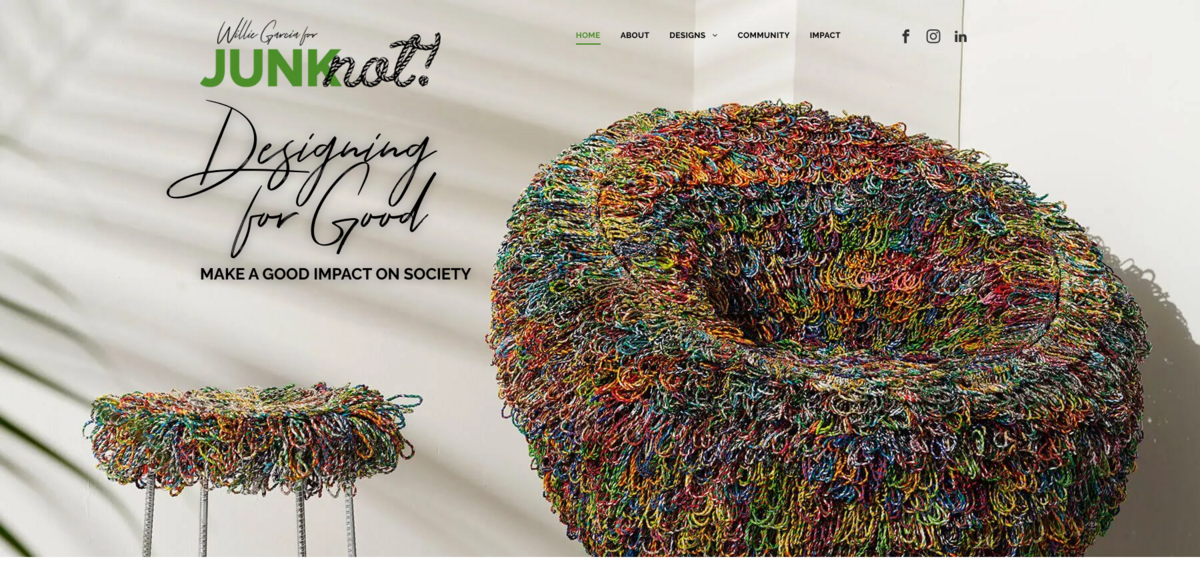What Is the Junknot Project?
Junknot is an eco-conscious initiative led by interior designer and environmentalist Willie Garcia, who’s all about creating spaces that breathe and spark creativity. The project transforms plastic waste into beautiful, functional furniture while also crafting timeless pieces of homeware, fashion accessories, and commissioned works. But it’s not just about design—it’s about reducing carbon footprints and making a real difference. Operating out of the Garcia Compound in Biñan, Laguna, Philippines, Junknot brings together a growing community of makers and patrons who share a commitment to stewarding the environment.
The Main Benefit: Turning Waste into Opportunity
At its core, Junknot is about more than just recycling plastic—it’s about empowering communities and creating sustainable livelihoods. Here are some key facts that highlight the impact:
- Plastic waste is collected by local community members, turning trash into treasure.
- Community members are trained to make ropes from the collected plastic, providing them with new skills.
- These ropes are then used to craft furniture and other products, closing the loop on waste.
- 5% of the proceeds from chair sales go directly back to the community, supporting ongoing environmental efforts.
- Junknot’s approach fosters responsibility and pride in the community’s own environment.
Designing for Good: More Than Just Aesthetic
Willie Garcia’s vision goes beyond creating pretty things. It’s about designing with purpose—spaces and products that inspire creativity while being kind to the planet. Every piece from Junknot carries a story of sustainability and social impact. The company’s commitment to eco-conscious design means that each item is crafted thoughtfully, with an eye toward reducing environmental harm and promoting longevity. It’s a fresh take on design that blends artistry with activism.
Community at the Heart of the Project
The community isn’t just a beneficiary—they’re active participants in the Junknot journey. By teaching locals how to turn plastic waste into ropes, the project builds skills and creates jobs. This hands-on involvement fosters a sense of ownership and responsibility toward the environment. Plus, the financial incentives from product sales help sustain these efforts, making the community a vital partner in the mission. It’s a win-win that nurtures both people and planet.
Expanding the Range: From Interiors to Fashion
Junknot’s creativity doesn’t stop at furniture. The project also produces a diverse range of products including homeware, fashion accessories, and commissioned works. This variety showcases the versatility of recycled materials and the innovative spirit behind the brand. Whether it’s a stylish chair or a unique fashion piece, each item reflects the same dedication to sustainability and quality. It’s design that’s as functional as it is meaningful.
Project Impact: Aligning with Global Goals
- SDG 11: Sustainable Cities and Communities – promoting responsible consumption and waste management.
- SDG 12: Responsible Consumption and Production – encouraging sustainable production practices.
- SDG 13: Climate Action – reducing carbon footprints through eco-conscious design.
- SDG 8: Decent Work and Economic Growth – providing livelihood opportunities for local communities.
- SDG 15: Life on Land – fostering environmental stewardship and reducing pollution.
Connecting Through Design and Environment
Junknot isn’t just a project; it’s a movement that connects design, environment, and community in a meaningful way. By blending creativity with sustainability, it challenges the traditional boundaries of interior design and fashion. The project invites everyone to rethink how we interact with our surroundings and the materials we use. It’s a call to action—to make a good impact on society, one thoughtfully designed piece at a time.





















